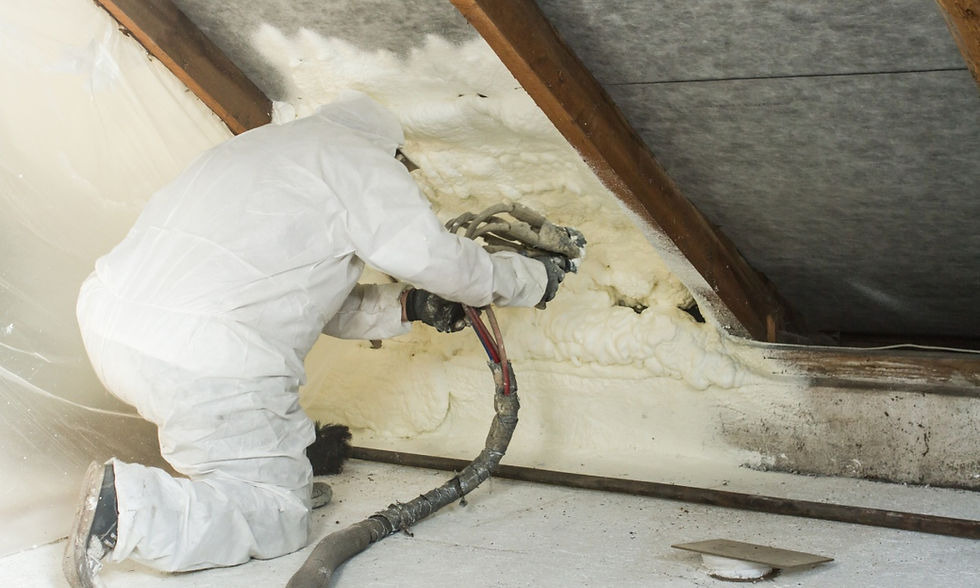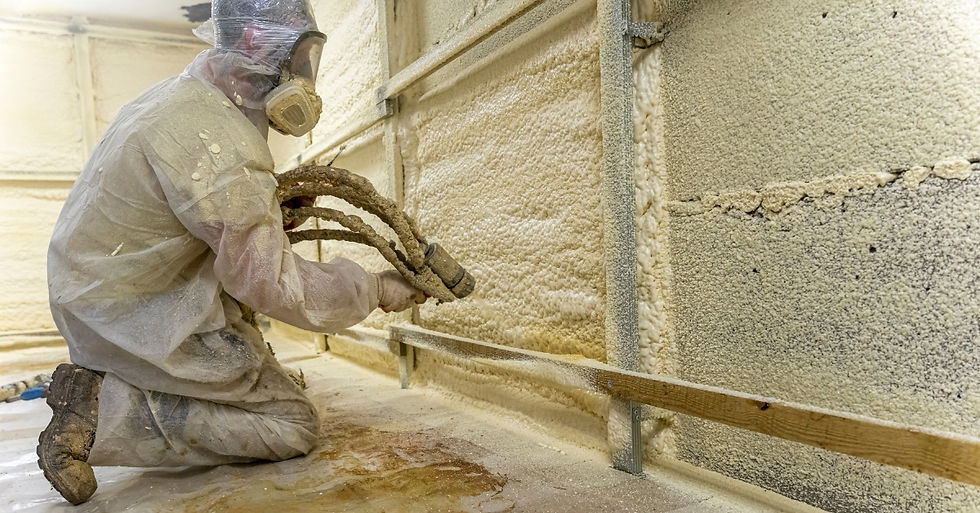10 Signs Your Spray Foam Transfer Pump Needs Replacing
- James King
- Aug 7
- 4 min read

When your spray foam transfer pump is working properly, you can complete jobs efficiently with consistent, high-quality results. However, when minor issues start to develop, it can lead to expensive delays, wasted materials, and frustrated customers. Many contractors wait too long to purchase a replacement, hoping that a quick repair will solve their problems. However, this can lead to unexpected downtime when your pump fails.
Recognizing the warning signs early allows you to plan for a replacement on your timeline rather than being forced into an emergency purchase. Let’s discuss the ten most common signs your spray foam transfer pump needs replacing, so you can make informed decisions.

Common Uses for Spray Foam Transfer Pumps
Spray foam transfer pumps serve several critical functions in professional insulation work:
Transporting spray foam materials from drums or storage tanks to spray machines
Ensuring consistent material flow and maintaining proper pressure during application
Preventing material contamination by providing a sealed transfer process
Facilitating high-volume spraying for large-scale insulation projects
Supporting the application of spray foam in both residential and commercial settings
Streamlining operations by minimizing material waste and downtime
Understanding how your air-driven pump should perform in these various applications makes it easier to spot when something isn’t working correctly.
Sign 1: Decreased Output Pressure
One of the first indicators that your pump needs attention is a noticeable drop in output pressure. Healthy spray foam transfer pumps maintain consistent pressure throughout operation, typically ranging from 100 to 1,000 PSI, depending on your specific model and application requirements.
You’ll notice a decrease in pressure when the spray pattern becomes weak or when you need to hold the trigger longer to achieve the same coverage. This problem often develops gradually, so operators might not immediately recognize the decline. Check your pressure gauges regularly, and compare readings to your pump’s specifications.
Sign 2: Inconsistent Spray Pattern
Professional spray foam application requires a consistent spray pattern to achieve proper coverage and foam quality. When your pump starts delivering inconsistent flow, you’ll see variations in foam thickness, uneven coverage, and potentially compromised insulation performance.
Watch for spray patterns that start strong but fade during application or patterns that fluctuate between heavy and light coverage without trigger adjustment. These inconsistencies often result from worn pump components that can no longer maintain steady material flow.
Sign 3: Unusual Noises During Operation
When using an air pump, strange noises may indicate underlying issues that require attention. A high-pitched squealing sound might point to a worn or misaligned belt, especially in larger models. Clicking or rattling noises could signal loose components or debris lodged in the pump.
If you notice a constant hissing sound, it could be due to an air leak in the hose or fittings. Additionally, grinding noises often suggest internal damage, such as worn-out bearings or improper lubrication.
Sign 4: Overheating Pump
Overheating can lead to complete pump failure if not addressed promptly. Modern spray foam transfer pumps include thermal protection systems, but frequent overheating episodes indicate underlying problems.
Check for excessive heat buildup around the pump body during normal operation. Air pumps feel warm but not too hot to touch. If your pump’s thermal protection system activates regularly or if you notice burning smells, stop operation immediately.
Sign 5: Frequent Breakdowns
Track how often your pump requires repairs and the nature of those repairs. New pumps should operate reliably and only need routine maintenance for several years. As pumps age, components wear out and failure rates increase.
Consider the total cost of ownership when evaluating the frequency of breakdowns. Calculate not just repair costs but also lost productivity, emergency service calls, and material waste. If you’re calling for repairs monthly or spending near the pump’s replacement cost on annual repairs, replacement is more economical.

Sign 6: Visible Wear and Tear
Regular visual inspections can reveal important information about your pump’s condition. Focus on high-wear areas such as seals, gaskets, hoses, and connection points. Look for cracks, corrosion, or excessive wear patterns that indicate aging components.
Check the pump housing for signs of material leakage or chemical damage. Inspect mechanical components for corrosion or loose contacts. Examine the pump’s mounting and frame for stress cracks or loose fasteners.
Sign 7: Increased Air Consumption
Monitor your pump’s air usage over time. Healthy pumps maintain consistent intake for similar applications. Gradually increasing usage often indicates that the pump is working harder to achieve the same results.
Compare current consumption to manufacturer specifications or your historical usage data. Significant increases might result from pump inefficiency, increased internal friction, or system pressure problems that force the equipment to work harder.
Sign 8: Difficulty Priming the Pump
Priming problems can indicate several underlying issues with your transfer pump. A healthy pump should prime quickly and maintain that state throughout operation. If you’re experiencing extended priming times, investigate potential causes to identify the issue.
Check for air leaks in suction lines, damaged check valves, or worn seals that allow air to enter the system. Verify that material levels are adequate and that suction hoses are properly positioned. Sometimes, priming problems result from changes in material viscosity or contamination.
Sign 9: Leaks and Fluid Loss
Material leaks may result in both safety hazards and economic losses. Spray foam materials are expensive, and leaks can create environmental concerns and workplace safety issues. Identify leak sources and evaluate their severity.
External leaks around seals, gaskets, or connection points might be repairable with routine maintenance. However, internal leaks that cause material mixing or pressure loss often require major component replacement. Monitor material consumption rates to identify less obvious internal leaks.
Sign 10: Age of the Pump
Consider your pump’s age in relation to the manufacturer’s recommendations and industry standards. Most spray foam transfer pumps provide reliable service for 5–7 years with proper maintenance, though this varies based on usage intensity and operating conditions.
Older pumps become increasingly expensive to maintain as replacement parts become scarce. Newer pumps often offer improved efficiency, better controls, and enhanced safety features that can improve your operations.
Recognizing the signs your spray foam transfer pump needs replacement requires careful evaluation of multiple factors. Sometimes the decision to replace earlier rather than later provides better long-term value. Once you’ve purchased your new transfer pump, you’ll need a high-quality hose to facilitate the application process. HandCrafted Hose Company has all the products and parts you need to ensure your insulation job is done right. Our low-pressure hoses will fit perfectly with your needs and budget.





